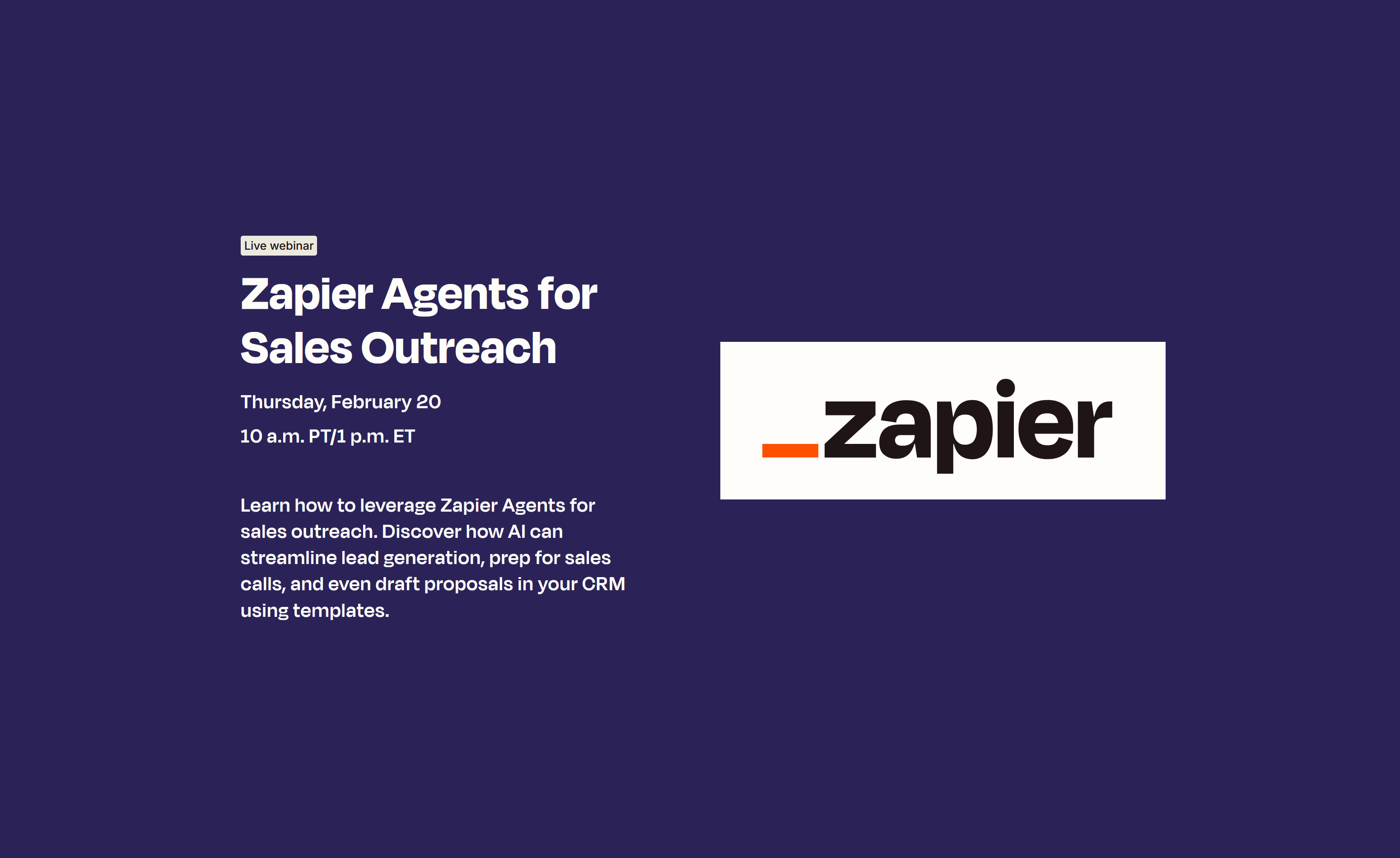
Today I attended a webinar hosted by Jane Zhang from Zapier’s product marketing team. The focus was on Zapier’s new AI agent offering, with the webinar providing some real concrete examples of how AI agents can help a business with their lead generation efforts.
There’s a lot of buzz, hyperbole, and misinformation in this space – so it was nice seeing a reputable company like Zapier jumping in here and facilitating a conversation featuring a real case study. I probably represent one of many who are looking for new examples of how this emerging AI/Agent technology can serve a business in today’s market conditions.

The Main Event

The example used early in the webinar was presented by Evan Nison, president of a PR and SEO agency called NisonCo based in New Jersey. Evan showed off a sample agent built on the platform that would do automatic lead generation.
The agent he built lives within the Zapier platform. Said agent scans a PR news website to look for press releases featuring companies that are in the industry he sells into. Once the agent determines that the company found in its search matches the criteria for a potential customer, it then does additional research to identify the decision maker that could purchase the product he’s selling.
There’s some really neat “AI” magic happening at the decision maker identification step. The LLM prompt he uses first looks for individuals online with a Head of Marketing job title, and if it can’t find that, falls back on individuals with a title like CEO. This is nice flexibility in the programming allowing his agent to be useful in finding these people across organizations of different sizes and configurations.
But the magic continues. He added additional LLM prompting telling the agent to only add lead information to his sheet if it had a high confidence of it actually being accurate/useful. This step helps filter out AI hallucination – something that critics have leveled at AI tools to date as something that causes their usefulness to be limited in areas requiring high accuracy.
Additional agent capabilities leveraged by Nison’s team included tools to prepare notes for sales calls, build first drafts of sales proposals, and more based on the information gathered from his funnels and internet research agent tooling within Zapier.
Best Practices

Also present on the webinar was Zapier’s Head of Agents, Anna Marie Clifton. Anna Marie, along the other presenters, also shared some best-practices to keep the AI agents between the lines if you will, where the output they’re generating is actually useful to a business.
One such example was to treat the AI like a high school intern working on projects for you. The idea being to keep your directions to the agent clear and direct, linear, and contextualized as much as possible. The AI agent, like a high school intern, won’t know a lot of the intricacies that make your business tick that come from years of experience – so you’ll need to get very clear and specific, providing that context in your LLM prompts, when leveraging AI to perform automation tasks in your company.
It was also advised to define the output you expect, again, very clearly and specific in terms of the output structure and validation it should do when generating results for you.
Anna Marie also mentioned that these agents can integrate with the connections that Zapier has developed over the years, long before the AI boom, to input and output data from their agent platform. This is great news, because Zapier already supports functions such as posting messages to Slack, sending emails via MailGun, filing tickets on Asana, etc.
Where Do We Go From Here
One of the hats I’ve worn over the years is building API/EDI connections for businesses to automate processes for them. Traditionally, this has required a substantial amount of manual work to get systems talking to each other in a way that’s accurate and useful in a business critical setting. There really hasn’t been significant disruption in this industry for a while – until the last year or two – with the emergence of AI.
These prompt/agent tools are still early and the usefulness of them isn’t fully realized yet. But companies like Zapier and their Agent offering are making automation technology accessible to more and more companies – which means a lot more of this automation technology will be part of our economy in the future. This webinar shows that now even verticals like digital marketing and SEO companies can get in on the action and utilize automation to make their companies more efficient and deliver more value.
Thanks to Zapier for getting smart people in the room to show how this works. I’ll be experimenting with these tools to see how they can help my existing clients and may share how that’s panned out in a future article. In the mean time, if you’re a company needing help navigating the automation/integration space – I’m available for hire as a consultant to help you navigate the process. Drop me an email and let’s chat!


Leave a Reply